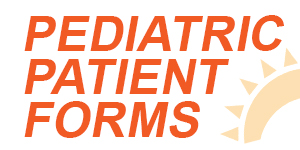Surprisingly, cupping therapy isn’t new news. While Olympic athletes donned the marks from this type of therapy, making it a globally known treatment, cupping therapy actually dates back to ancient times. It’s been documented in both Egypt and Chinese ancient medicinal practices.
Yet, its effectiveness should never go unnoticed. So, what is cupping therapy exactly? What should you know? Let’s dive in!
What is Cupping Therapy?
During a cupping session, specially designed round cups are placed on the skin. These cups can be made of glass, bamboo, or silicone. There are two main types of cupping: dry and wet.
In dry cupping, the cups are heated with fire or a separate heat source to create suction as they cool. Alternatively, a manual pump might be used to create suction without heat. In wet cupping, a mild suction is created, then small incisions are made on the skin, and a second suction is used to draw out a small quantity of blood.
The cups are typically left in place for 5 to 10 minutes. While the sensation is unique, it is generally not painful. However, it’s common to feel a pulling sensation as the skin rises into the cup.
What Can Cupping Therapy Treat?
Cupping therapy is known to assist in treating a variety of health issues. It’s often sought for:
- Muscle Aches, Stiffness, and Tension: By increasing blood flow, cupping can relieve muscle tension and promote cell repair.
- Improved Range of Motion: The therapy helps loosen muscles and connective tissue, enhancing flexibility.
- Respiratory Issues: Conditions like asthma and coughs can be alleviated through improved lung function.
- Digestive Disorders: It’s believed to improve digestion and reduce symptoms of disorders like IBS.
- Skin Conditions: Cupping can help in treating acne, scars, and stretch marks by improving blood flow.
- Pain Relief: Many seek cupping for its ability to reduce pain, including that from arthritis and herniated discs.
Is Cupping Painful? What About Side Effects?
Cupping therapy is not typically painful. However, it can leave marks on the skin, which are essentially bruises from the suction. These marks may appear as circles in varying shades of red and purple.
Side effects are usually minor, including temporary redness, irritation, and bruising on the treated areas. These should heal within a couple of weeks.
Safety and Who Should Avoid Cupping
Cupping is safe when performed by a trained practitioner. However, it’s not suitable for everyone.
While older children can undergo cupping, it should be for shorter durations. It’s not recommended for children under four years of age. Cupping should also not be performed on or near the abdomen or lower back of pregnant women. Due to thinner, more sensitive skin, seniors should further approach cupping with caution. Lastly, those with internal organ disorders, skin irritations like sunburns or ulcers, and women during menstruation should avoid cupping.
Interested in Trying Cupping Therapy?
Cupping therapy offers a unique approach to treating various health conditions through an all-natural, non-invasive method. At Awaken Chiropractic, we are proud to offer this treatment as part of our services. As your local Parker chiropractor, we strive to help all of our patients in the best way possible—and sometimes, cupping is the answer!
If you’re interested in exploring the potential of cupping therapy, contact us today. Remember, every individual’s response to therapy is unique, yet a professional can guide you through the entire process and tailor it to your specific needs.






